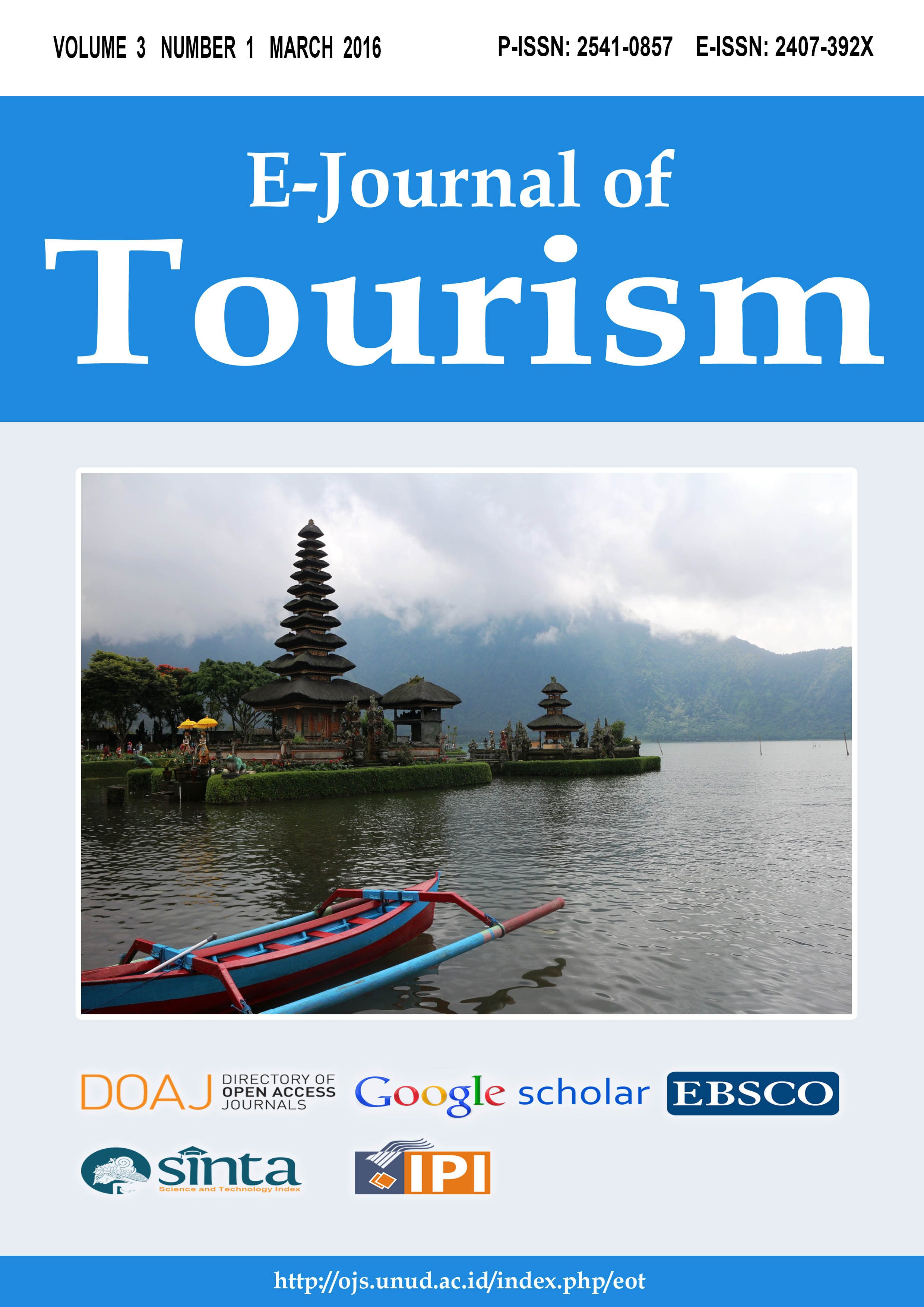Comparison of Four Patterns of Management of Coastal Tourism Destinations in Bali-Indonesia
Abstract
Utilization of coastal in Bali tourism destination by investor is to build of hotel, bar and restaurant, and to develop beach tourism attractions, and so location of tourists expose to the sun known with term 3S is Sea, Sand, Sun. There are four patterns of management of coastal tourism destinatyion in Bali, nemaly, (1) Pattern of management by village tradition; (2) Pattern of management by village foundation; (3) Pattern of management by government authority/agency; and (4) Natural development (without pattern of management). The pattern of management by village tradition was applied in Kuta beach and Jimbaran beach in Badung regency. The pattern of management by village foundation was applied to manage of Sanur beach in Denpasar city. The pattern of management by government authority/agency was used to manage of Nusa Dua beach and surrounding in Badung regency. Meanwhile, natural development (without pattern of management) was used in many beaches in Bali, like Nusa Lembongan island beach in Klungkung regency. Two management patterns - management by village tradition and management by village foundation initiatives by local community and its developing, local community livelihood in all long of beach very depending on tourism. While, management by authority agency initiatives are mainly applied by the central government in Jakarta. Coastal tourism managed through the three kinds of management approaches are generally good, particularly on environmental security, tourists safety, maintaining clean environment which are made possible through mobilization of task forces. On the other hand, coastal areas without planned tourism management, generally suffers from several problems. Hence the development of sustainable coastal tourism should be managed by one of institution which may be that of a local community or a governmental authority/agency
Downloads
Keywords

This work is licensed under a Creative Commons Attribution 4.0 International License.
The copyright of the received article shall be assigned to the journal as the publisher of the journal. The intended copyright includes the right to publish the article in various forms (including reprints). The journal maintains the publishing rights to the published articles.




















